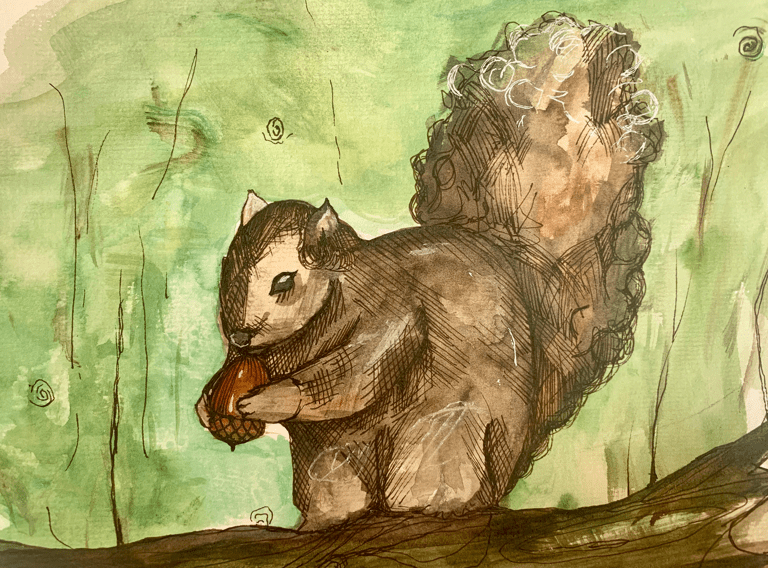Yale study discovers animals’ crucial role in tropical forest restoration through seed dispersal
A new YSE study, led by Sergio Estrada-Villegas and conducted in central Panama, indicates animals are key players in seed dispersal of recovering tropical forests.

Anna Chamberlin, Staff Illustrator
A recent study conducted by Yale School of the Environment researchers discovered that animals — particularly flightless mammals — are key players in the seed dispersal of trees in recovering tropical forests.
The study — led by Sergio Estrada-Villegas, assistant professor at Universidad del Rosario and former Cullman postdoctoral associate at YSE — involved analyzing data which spanned over 100 years at the Barro Colorado Nature Monument in Central Panama. The researchers strived to understand how different animal species contribute to seed dispersal in the process of forest regeneration.
“Animals are usually perceived as passive players as forests regenerate,” Estrada-Villegas said. “We believe this perception is inaccurate because we know animals disperse a significant number of plant species, particularly in tropical forests. By dispersing seeds, animals might be much more important in the regeneration of tropical forests than previously thought.”
The researchers investigated four categories of animals: large birds, small birds, flightless mammals and bats, according to Estrada-Villega. He noted that 300 plant species in forests, ranging from 20 to 100 years of regrowth, could each be associated with one of the four animal categories through the seed dispersal process. The large regrowth time span range helped Estrada-Villegas understand how each animal group’s role changed over time.
Forests face destruction via many avenues — from loggers to wildfires. Many forests must go through a restoration process to return to a healthy and biodiverse state. The study found that the longer a forest had been in recovery, seed dispersal increased among large birds but decreased among small birds, said Estrada-Villega. Bats held a minor role in seed dispersal, and contrary to predictions, flightless mammals played the most crucial role.
Previous studies reported flightless mammals having low dispersal numbers, noted Estrada-Villega. However, according to Estrada-Villega, Central Panama has been protected from hunting since the 1970’s and is surrounded by large tracts of forest growth.
“We believe these two aspects have kept a diverse and abundant community of flightless mammals that disperse an important number of tree species,” Estrada-Villegas said.
The study also accentuates the importance of redundancy: Estrada-Villegas explained that since many animal species disperse the same seeds, if one population phases out, another group of animals will continue seed dispersal.
This study is particularly unique given the large dataset, according to Estrada-Villega. The researchers used two existing data sets and combined them “in a novel way,” allowing them to gain “valuable insights” about forest regeneration, noted Liza Comita, professor of tropical forest ecology.
In general, forest restoration research highlights the importance of ecological relationships, as organisms depend on one another, according to Graeme Berlyn, professor of forest management and physiology of trees.
“[For example], the Yucca plant is only pollinated by the Yucca moth, and the moth can only survive if it can deposit its eggs in the Yucca plant,” Berlyn said. “So if we lose one, we lose both.”
Furthermore, the dynamic tracking and quantification of different animal groups and their role in seed dispersal is unique among restoration research, according to Estrada-Villegas.
Given this clearer understanding of the role of animals in forest restoration, Estrada-Villegas believes animal monitoring should be included in future restoration efforts.
“Usually, tree cover or biomass accumulation are the variables that determine the success of restoration projects,” Estrada-Villegas said. “I believe that understanding which ecological interactions reestablish during restoration and their speed of recovery can be as important as quantifying variables related to forest structure.”
Using this study as fuel, Estrada-Villegas hopes to bring animals back into the conversation regarding recovering forests.
Estrada-Villegas said he was “shocked” that many of his colleagues focusing on forest regeneration and restoration had been completely focused on trees, regarding animals as “bystanders of plant regeneration.”
“We needed to bring back the animals into the discussion,” Estrada-Villegas said.
This study was co-authored by Pablo Stevenson, a faculty member at Universidad de los Andes; Omar López, a researcher at the Smithsonian Tropical Research Institute; Saara J. DeWalt, the department chair Biological Sciences at Clemson University; and Daisy H. Dent, a topical ecologist at the Max Planck Institute for animal behavior.
The study was published in the The Royal Society.







